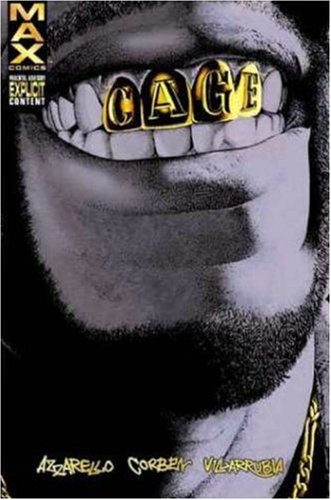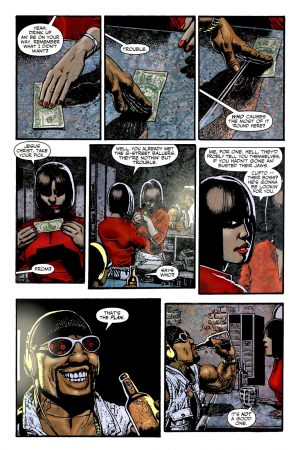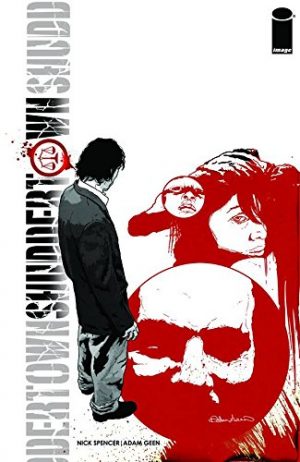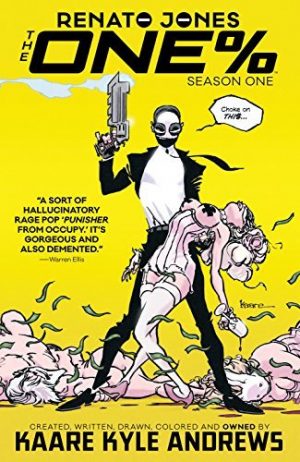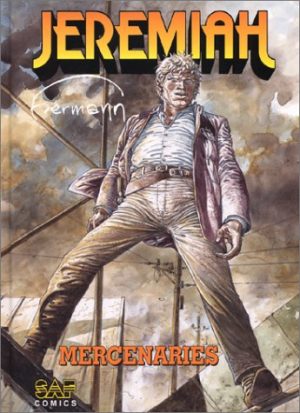Review by Karl Verhoven
Luke Cage was a good choice for transferring to Marvel’s turn of the century, more adult-oriented Max imprint. At his best he’s always been situated in a grimy urban environment that couldn’t be convincingly created for stories not allowing the language of the streets, the brutality, and the consequences of that violence. Of course, that was back in the days before he became cuddly family man Luke Cage.
Turning him over to Brian Azzarello means authentic sounding, gritty dialogue is a given, and the scene is set with Cage in a seedy strip club checking things out facing the mirror, his shades and cans on as drawn by Richard Corben, and bling spelling his name hanging around Cage’s neck. Corben’s a surprise choice as artist, but any doubts about transferring his fantasy and horror background to urban realism evaporate after the first few pages, as his locations are real and the bulky Cage dominates every panel he features in. Corben’s also great with the minor nuisances, here a couple of decades drawing Gollum types serving him well. The bulging veins are too exaggerated, excess beyond Cage’s bodybuilder bulk, but otherwise the milieu is meticulous, with Jose Villarrubia’s thoughtful colours sealing the deal.
“Looking at this lady I knew for sure that her right price wouldn’t even buy me no right shoe”. Azzarello nails Cage’s character for a noir mystery where he barely moves beyond a few neighbourhood bars, but it’ll take someone who lives the life to know whether the phrasing still stands up all these years later. It has the smack of authenticity, though, and that’s what counts. Beginning by being asked to investigate the death of a young girl when one set of gangsters shot at another, Cage talks and watches, and along the way Azzarello gives a version of his past and reconfigures a few names from his earlier series, nicely redesigned by Corben. The past is one of a couple of unconvincing aspects, dashed off without really explaining how Cage became the way he is, but most of the remainder still thrills.
It’s the ending that won’t be to all tastes. Azzarello can be a join-the-dots writer, and that’s what he pulls here, as the future comes steamrollering down the street, but he doesn’t lay it all out. Don’t worry, you’ll probably put it together, and if not, hell there’s a hundred pages of great Corben art here. And bear in mind that not that many years after Cage originally saw print The Wire was winning every TV award going for taking the same vivid approach to gangster culture.
